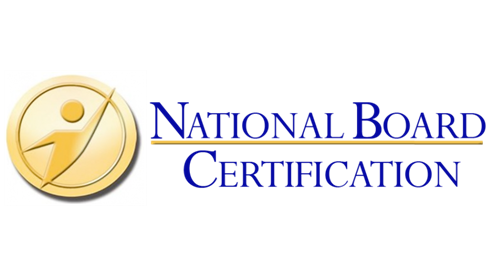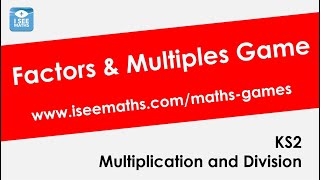
First, determine whether you are eligible to receive financial aid from college. There are many factors that determine how much aid you can receive. This includes the CSS/PROFILE formula, need analysis, and expected family contribution. Another option is scholarships. To apply for financial aid, you'll need to submit a letter outlining your circumstances.
Formula CSS/PROFILE
To determine college eligibility for financial aid, the CSS/PROFILE formula will be used. This formula asks for more information that the FAFSA, and grants aid to students who have the greatest financial need. You should fill out the CSS Profile in order to receive the maximum financial aid. Please include details about any financial issues you may have in your CSS Profile. This could be income fluctuations or the repayment of debt. Schools may also have additional questions at their end.
The CSS Profile differs from the FAFSA form which is completely free. Colleges can ask about your finances through the CSS Profile. This results in a more accurate and personalized application, which may result in additional financial aid.
Need analysis formula
John Monro (director of Harvard University Financial Aid Center) developed the first need assessment formula, known as The "15 percent Rule," in order to better distribute institutional scholarships among needy students. At that time, many institutions were awarding financial aid based on the income of the school's members, not on the needs of students. College Board finally established the College Scholarship Service.

The FAFSA, or Free Application for Federal Student Aid, is used by the need analysis formula to determine how much financial assistance a student needs. The FAFSA information and the school's cost of attendance determine the formula. The FAFSA simplification law has changed the formula.
Formula for expected family contribution
The Expected Family Commitment (EFC), a measure of a family’s financial strength, is used by colleges to determine the amount they can offer in financial aid. It depends on whether the family is dependent or independent. EFC can range from zero to twenty-five thousand dollars.
The EFC can be calculated by taking into account the income and assets available. This is then divided with the number of students in college for 2020-2021. A formula includes an asset-protection allocation. Students are required to contribute a specific percentage of their income, minus taxes.
Scholarships
There are many scholarships for college that help students pay for their education. They don't have a repayment requirement and can be used for tuition or debt relief. Every year, hundreds of thousands are granted scholarships and fellowships. Most scholarships are awarded to students with particular skills or qualifications. Others may be given to students in a specific field of study or from a particular region of the country. Some scholarships are offered to students in financial need.
Two types of college financial assistance are scholarships and grants. While scholarships are not subject to repayment, they will more often come from the government than an individual source. Most scholarships are merit-based. To be eligible, you will need academic standards.

Emergency grants
You may be eligible for college financial aid emergency grants if you are a student who is in dire need of additional money to pay college. These funds are granted by colleges on the basis of your expected family contribution (EFC), based off FAFSA data. The college will award you between $1,000 and $700 depending on your family income. You can receive the money via direct deposit or by check if you meet certain criteria. Colleges may not be allowed to grant emergency federal aid for non-citizen student.
It is important to understand the rules and criteria for emergency college funding. This funding isn't intended to cover college tuition or fees and can only be used to fund one-time needs. The funds you receive may be used for housing, education, childcare, and technology. While emergency grants generally don't cover tuition costs, they will cover any other expenses that may prevent you finishing your degree.
FAQ
What is a vocational school?
Vocational schools offer programs for those who are interested in a particular occupation. They can also offer training in specific skills and general education.
Vocational education plays an important role in our society, as it helps young adults develop the skills needed to succeed in everyday life. It ensures all students have access high-quality learning opportunities.
Vocational schools offer a variety of options for students, such as apprenticeships, certificates and diplomas, degrees, college transfers programs, and other postsecondary credentials. Vocational schools are able to teach both academic and vocational subjects such as maths, science, English, English, social studies and music.
What is the difference in school and college?
Schools are often divided into classes or grades, with one teacher teaching a class of students. Colleges offer more specialized programs, and many include university-level classes. Schools usually focus on basic subjects while colleges may offer a variety of subjects including arts, science, languages, business, etc. The curriculum at both levels is designed to prepare students for further study at higher levels.
What is an Alternative School?
Alternative schools are designed to provide students with learning disabilities with access to education through the support of qualified teachers who can understand their needs.
An alternative school provides children with special educational needs the opportunity to learn in a regular classroom setting.
In addition, they are also given extra help when needed.
Alternative schools are not only for those who are excluded from mainstream schools.
They are open to all children regardless of ability or disability.
How do you get scholarships?
Scholarships can be granted to help cover college expenses. There are many types to choose from. These include:
-
Federal Grants
-
State Grants
-
Student Loans
-
Work Study Programmes
-
Financial Aid
Federal grants are directly issued by the U.S. government. Most federal grants require applicants to meet certain requirements. You will need to prove financial need.
Each state offers state grants. These funds are offered by individual states based on financial need. Others offer money for specific purposes.
Student loans are issued by banks and other lending institutions. Students often borrow money to pay for tuition and living expenses.
Employers should be encouraged to use work-study programs to help them hire qualified students. Employers must pay at least the minimum wage to their employees.
Financial aid helps low-income families afford college by covering most or all tuition costs.
Is it hard to be a teacher?
You must be a teacher. You will need to give a significant amount time to your studies.
You can expect to work 40 hours per semaine while earning your degree.
A job that is flexible with your schedule is another important consideration. Many students have difficulty finding part-time work that allows them to balance schoolwork and their personal lives.
After you have been offered a permanent position, you will be expected to teach classes throughout the day. You may also need to travel between schools each week.
Statistics
- In most developed countries, a high proportion of the population (up to 50%) now enters higher education at some time in their lives. (en.wikipedia.org)
- Among STEM majors, that number is 83.5 percent. (bostonreview.net)
- Think of the rhetorical power of nineteenth-century abolitionist Harriet Beecher Stowe, Martin Luther King, Jr., or Occupy Wall Street activists with their rallying cry of “we are the 99 percent.” (bostonreview.net)
- “Children of homeowners are 116% more likely to graduate from college than children of renters of the same age, race, and income. (habitatbroward.org)
- They are also 25% more likely to graduate from high school and have higher math and reading scores, with fewer behavioral problems,” according to research at the University of Tennessee. (habitatbroward.org)
External Links
How To
What can I do to become a teacher in my area?
Teacher jobs are available at public elementary schools, private elementary school, private middle schools. Public secondary schools, public secondary secondary schools. Private secondary schools. Charter schools. Public and private Catholic schools. Public and private daycare centers.
To become a teacher, you must first complete a bachelor's degree program at one of the following:
-
A four-year college or university
-
A program for associate's degrees
-
There are some two-year community colleges programs
-
A combination of these three types of programs
To qualify for certification for teaching positions, applicants must meet state requirements. These requirements include passing standardized exams and completing a probationary work experience.
The Praxis II test is required by most states. This test tests the candidate's comprehension of reading, writing and mathematics as well as their language arts skills.
Many states require applicants to get a specialized license to teach in their state.
These licenses can be issued by the state's boards of education.
Some states grant licenses without the need for additional testing. In these cases, the applicant should contact the board of education in his or her state to determine if this is true in your area.
Some states do not issue licenses unless the applicant has completed a master's degree program.
Individuals in other states can apply for licensure directly to their state boards of education.
The cost of licenses varies widely depending on their duration and the required coursework.
You might find that certain states only require you to have a highschool diploma. Others require you to have a bachelor's.
Some states require training on specific topics, such literacy or child development.
Some states require that candidates receive a master's degree before becoming licensed.
Many states require teachers to provide information about their previous jobs when applying for certification.
If you worked in another profession, you might want to mention it on your application.
However, the majority of states will accept any previous work experience regardless of what job it was.
You might wish to list the title of your last job, the position you held, and the years of service.
Potential employers will find this information helpful.
This shows that you have the relevant skills and experience.
You may have gained valuable work experience and new skills while working.
Employers can see this in your resume.